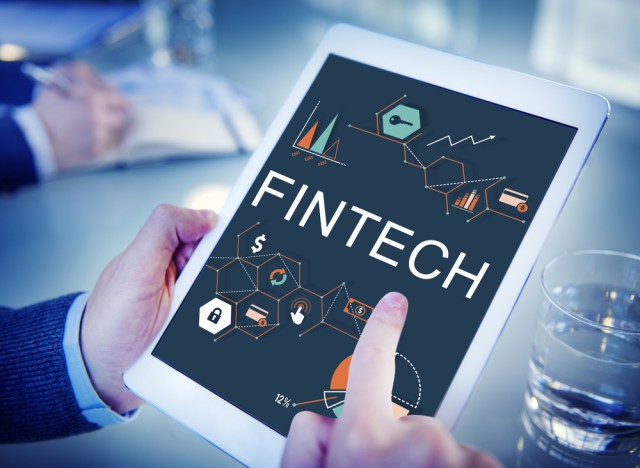 In the age of rapid technological advancement, Fintech stands as the vanguard of a financial revolution, reshaping the landscape of traditional banking and ushering in a new era of convenience and innovation. As this digital wave sweeps through the financial industry, it brings both promises and pitfalls. In this exploration, we delve into the pros and cons of Fintech, uncover the associated risks, and unveil strategies to safeguard against potential financial turbulence.
In the age of rapid technological advancement, Fintech stands as the vanguard of a financial revolution, reshaping the landscape of traditional banking and ushering in a new era of convenience and innovation. As this digital wave sweeps through the financial industry, it brings both promises and pitfalls. In this exploration, we delve into the pros and cons of Fintech, uncover the associated risks, and unveil strategies to safeguard against potential financial turbulence.
Pros of Fintech:
Accessibility Redefined:
Fintech’s most compelling advantage lies in its ability to make financial services accessible to all. Mobile banking applications and digital payment platforms have empowered individuals, granting them unprecedented control over their finances, anytime and anywhere.
Innovation Breeds Efficiency:
The dynamic nature of Fintech fuels innovation, birthing cutting-edge products and services that streamline financial processes. Automation, artificial intelligence, and blockchain technologies enhance efficiency, reducing costs for both consumers and financial institutions.
Financial Inclusion for All:
Fintech has the potential to bridge the gap between the banked and unbanked populations. Peer-to-peer lending, microfinance platforms, and digital wallets provide avenues for financial inclusion, empowering those traditionally excluded from mainstream banking.
Personalization Unleashed:
Data analytics within Fintech enables a tailored approach to financial services. From personalized investment advice to custom budgeting solutions, Fintech platforms enhance user experience by delivering services that cater to individual needs and preferences.
Cons and Risks of Fintech:
 Cybersecurity Vulnerabilities:
Cybersecurity Vulnerabilities:
The digital nature of Fintech exposes users and institutions to heightened cybersecurity risks. Instances of unauthorized access, data breaches, and identity theft underscore the importance of robust security measures to protect sensitive information.
Operational Disruptions:
The reliance on technology introduces operational risks, including system failures and service outages. Fintech companies must implement comprehensive contingency plans to minimize downtime and maintain user trust, as seen in the case of the widespread outage experienced by Robinhood in 2020.
Regulatory Challenges:
The rapid evolution of Fintech often outpaces regulatory frameworks, leading to uncertainties and compliance challenges. Companies operating in this space must navigate these complexities to mitigate legal risks and ensure long-term viability.
Data Privacy Concerns:
As Fintech companies amass vast amounts of user data, concerns about data privacy and protection emerge. Any mishandling or breach of this information can result in severe financial and reputational consequences, as exemplified by the Equifax data breach in 2017.
Mitigating Risks in Fintech Usage:
Invest in Cybersecurity:
Fintech companies should prioritize robust cybersecurity measures, employing encryption, multi-factor authentication, and regular security audits to fortify their defenses against potential breaches.
Enhance Regulatory Compliance:
To navigate the evolving regulatory landscape, Fintech firms must invest in compliance strategies and frameworks. Proactive engagement with regulatory bodies helps to minimize legal risks.
Diversification and Redundancy:
To address operational risks, Fintech companies should invest in redundant systems, ensuring backup mechanisms are in place to minimize disruptions in the event of technical failures.
Education and Transparency:
Promoting user awareness about data security and privacy is essential. Transparent communication about how user data is handled builds trust and loyalty, reducing the likelihood of customer churn during challenging times.
Bankruptcy Concerns in the 18-34 Demographic:
The 18-34 age group, characterized by its tech-savvy and digitally engaged nature, is both the driving force and potential vulnerability in the Fintech realm. Overreliance on digital financial platforms and a lack of financial preparedness among this demographic could amplify the impact of potential disruptions.
Financial Literacy Programs:
Educational initiatives on financial management and the risks associated with Fintech can empower users to make informed decisions, reducing the likelihood of financial instability.
Emergency Funds and Traditional Banking:
Encouraging users to maintain emergency funds in traditional banks provides a safety net, mitigating the impact of potential disruptions in Fintech services. This diversification of financial resources can act as a buffer during challenging times.
Diversification of Platforms:
Encouraging users to diversify their use of Fintech platforms mitigates the risk of over-reliance on a single service provider. A diversified approach enhances financial resilience, ensuring that users are not overly vulnerable to disruptions in a particular platform.
In conclusion, while Fintech opens doors to unprecedented financial possibilities, a prudent approach to its utilization is imperative. Responsible innovation, cybersecurity diligence, and user education are pivotal to navigating the Fintech frontier without succumbing to potential financial pitfalls, especially among the digitally immersed 18-34 age group. The key lies in striking a balance between embracing technological progress and maintaining financial resilience.
Is FINTECH another way of offering financing?
Customers of ‘fintech’ banking apps report missing funds, closed accounts:

